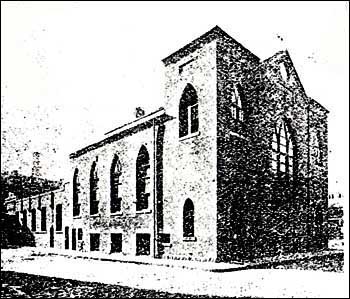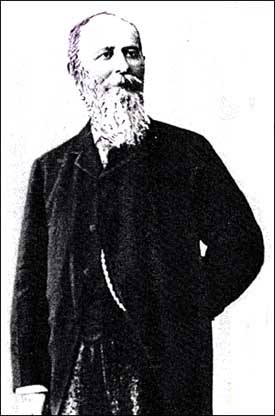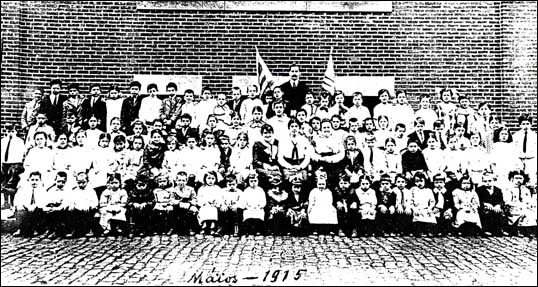
|
The Historic Boston Greek Cathedral -- Reliving 100 Years By Christopher Gussis, Chair Publicity
The Annunciation Greek Orthodox Cathedral of New England will celebrate its 100th Anniversary during the year 2003. Being one of the oldest parishes in the United States and one of the first to be declared a Cathedral of the Greek Orthodox Church in the western hemisphere, it is officially designated a Boston landmark and listed in the National Register of Historic Places. As the Seat of the Diocese of Boston, the Cathedral is recognized as The Mother Church for the faithful of New England, and through its history has provided spiritual inspiration and guidance for many Greek Orthodox communities in New England and throughout America. From the beginning, the Cathedral demonstrated concern for the unity of the Greek Orthodox Church in America. It gave support to the Ecumenical Patriarch by promoting its canonical jurisdiction over the Church in America. It undertook initiatives for the unification of the Greek Orthodox Church under a central administrative authority. Once the Greek Archdiocese of North and South America was established, it gave wholehearted support to its institutions and programs. In addition, it formulated and expanded a wide variety of programs to serve the youth of the church. Perhaps the best measure of the Cathedral's contribution to the Greek Orthodox Church at large is the number of its clergymen who were elevated to high Ecclesiastic Offices. The Rev. Joakim Alexopoulos became the first Bishop of Boston and later Metropolitan of Demetriados. The Rev. Athenegoras Cavadas became the Bishop of Boston, the first Dean of Holy Cross Theological School and later Archbishop of Thyateira. The Rev. James (Iakovos) Coucouzes became Bishop of Melita, and from 1959 to 1996 Archbishop of North and South America. As Archbishop, he was recognized as the Dean of all religious leaders in the United States. Assistants to the Cathedral Dean also promoted were Rev. George Bacopoulos, Chancellor of the Archdiocese, V. Rev. Alexander G. Leondis, Chancellor of the Diocese of NJ, Rev. Dr. Theodore Stylianopoulos, professor at Holy Cross School of Theology, author and member of the Central Committee of the World Council of Churches, and Rev. Michael T. Kontogiorgis, Assistant Chancellor of the Archdiocese. Many eminent religious hierarchs and political statesmen have served at the altar or visited the Cathedral. Among them are Greek Orthodox Patriarchs Athenegoras, Diodoros, Benedictos, Dimitrios and Bartholomew, Archbishops Athenegoras, Cavadas, Michael, Iakovos, Chrysostomos, Spyridon, Dimitrios, Metropolitans and Bishops, Catholic Cardinals, Protestant Bishops, former United States presidents and numerous other political dignitaries. In looking forward, the Cathedral, through its many significant contributions in the life of the Greek Orthodox Churches throughout America during the past 100 years, will continue to maintain its historical prominence and spiritual obligation, as the Seat of the Diocese of Boston and the Mother Church of New England Orthodoxy. II. 1890-1920 Prior to 1890, there was little effort to organize the pioneering Greek immigrants living in the Boston area. In 1890, approximately one hundred Boston Hellenes formed the Plato Society to help themselves with the many problems of living in their new setting and to provide religious services. The Society engaged a Syrian Orthodox priest who spoke Greek to celebrate the Divine Liturgy at a rented hall. The Society also conducted evening English classes for immigrants and after school Greek language classes for its youth. After several years, the lack of financial strength caused the Society to disband.
The purpose of the Greek Community, as stated in the Charters' By-Laws, was to establish a Greek church, a school for teaching Greek and a reading room. To provide support for the new church community, the first ladies benevolent organization Agathoergos Society (Good Works Society) was formed under the leadership of Smaragdo Passali. The Society was renamed Adelphotis Kyrion (Ladies Sisterhood) and, in 1931, became The Ladies Philoptohos Society. Annual dances were held and social clubs formed, one of which resembled the AHEPA (American Hellenic Educational and Progressive Association). In 1906, Fr. Phiampolis resigned due to poor health and was replaced by Rev. Nestor Souslides a priest appointed by the Patriarch. During this period, Anagnostopoulos founded the National Union to bring all Greek immigrants under one organization and to keep alive a sense of duty to the homeland.
Under the leadership of John Parmenides,.a committee raised $10,000 for land to build a Church behind the former Hotel Bradford on Winchester Street. The new Church officially opened February 13, 1907 and was named Evangelismos (Annunciation) of the Virgin Mary. It included a Parochial Day School for teaching English, special classes for immigrants, Greek language, history, culture, plus a library and reading room. Sunday vespers, lectures for youth and a choir were added to the Church program. In 1909, the Church youth organized an athletic program which included baseball, softball, basketball and a marathon. In 1911, Rev. Theodore Prousianos replaced Fr. Souslides. During the year, Professor Aristides Phoutrides founded a Helicon Society of Greek students at area universities and colleges. Rapid growth in Church membership and the Parochial School from 1905 to 1910 led to overcrowding of facilities and created a need for a larger Church. A financial dilemma in 1912 necessitated converting the Parochial School to an afternoon Greek School. In the middle of this and various fund raising activities" a serious split occurred in the Church community over political and nationalistic ties to Greece between Liberals (Venizelists) and Loyalists (King Constantine). This led to the formation of a rival church. The split continued until 1915 when the two churches united under Rev. Constantine Douropoulos. In 1916, under the leadership of Cathedral president Constantine Zevitas, a decision was made to relocate the Church on land purchased for 530,000 at the corner of Parker and Ruggles Streets. The new area was in close proximity to the world famous Museum of Fine Arts and Wentworth Institute;and provided an attractive and suitable setting for the new Church. WorId War I, political factionalism following the Greek disaster in Turkey, financial problems and lack of ecclesiastical authority and supervision resulted in a delay of building plans for several years. Rev. Joakim Malahias replaced Fr. Douropoulos as Cathedral Dean in 1920. Shortly thereafter, he was succeeded by Rev. Joakim Alexopoulos who revitalized the idea of building a new church. Next Page Page 1 2 3 4 |
|||
|
|
|||
 |


